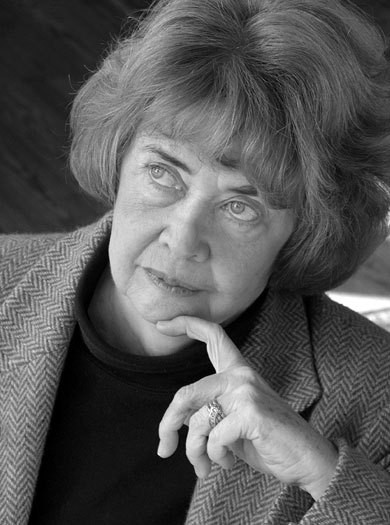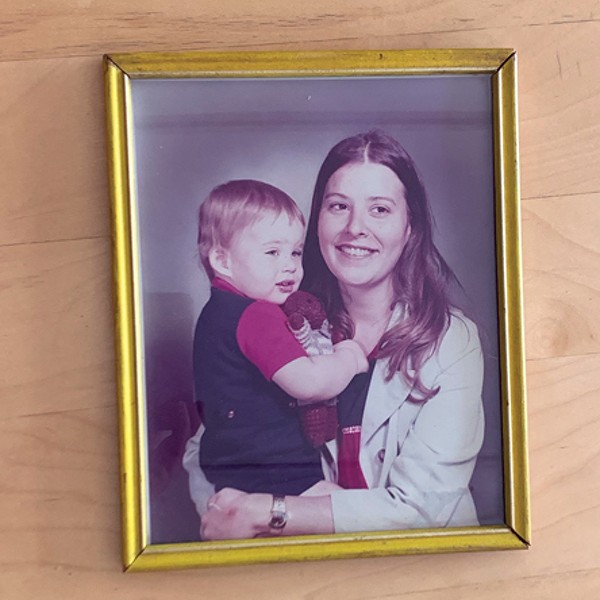Invited to her Woodstock home to interview bestselling author Gail Godwin, I feel like a favored character in one of her 11 critically acclaimed novels: a woman seeking a wiser female mentor for lessons in gentility and grace as well as (in this particular storyline) what it means to lead a writer’s life.
Over a career spanning 30 years, Godwin has also published two short story collections as well as a work of nonfiction and written libretti for ten musical works with her longtime companion, the composer Robert Starer (who died in 2001). Best known for her well-developed characters and liberally sprinkled literary quotes, historical facts, religious references, and allusions to high art, Godwin’s writing makes me want to start a book club, similar to one established by the Southern-gentry ladies in the author’s own A Mother and Two Daughters (1982), her first novel to reach number one on the New York Times bestseller list.
The three-time National Book Award nominee and recipient of a Guggenheim Fellowship, National Endowment for the Arts grant, and other honors works in a tidy, sun-splashed study, located in the southwest corner of her house, directly opposite where Starer once wrote his musical scores. Lined with reference materials related to the subjects that permeate Godwin’s writing, the room’s bookshelves hold works on psychoanalysis, myth, and the Bible. Godwin’s characters and plots likewise emanate from the circumstances of her own Southern upbringing as well as the intellectual life she later shared with Starer.
Born in Alabama to North Carolinian parents and raised by her mother and grandmother, Godwin (though a lifelong Episcopalian) attended a Roman Catholic school. Her mother supported them as a college English teacher, journalist, and (using a pen name) a romance-fiction writer. Her absent father (who suffered from depression), a half-brother, and an uncle would all commit suicide. Godwin earned an undergraduate degree from the University of North Carolina and both mfa (at the Writers’ Workshop) and PhD from the University of Iowa. This formative personal history plays out in her writing in various permutations. For instance, readers encounter strong, independent yet often struggling (emotionally or economically) female characters, such as the eponymous narrator of Violet Clay (1978), a thwarted artist who earns a living painting covers for Gothic-romance paperback publishers Harrow House. The death of Godwin’s brother inspired the storyline of A Southern Family (1987), while that of her manic-depressive father beget Uncle Ambrose, a failed author who kills himself in Violet Clay. Godwin’s recurring motif of deceased family members explores what the author calls “people starting out with less than the whole package.”
Ministers likewise abound in her books, including Father Melancholy’s Daughter (1991) as well as its sequel Evensong (2000), the title a synonym for vespers or an evening song of religious worship. Academics, particularly English PhDs, plopped down in college settings, also recur. Her novel currently in progress, Queen of the Underworld, stars a young female journalist living in Florida, which draws on Godwin’s onetime job, obtained shortly after finishing at unc, as a reporter at the Miami Herald.
As retold in the highly autobiographical novella Evenings at Five (2003), in 1973, her professional writing career scarcely begun, Godwin gave up a tenure-track job at the Iowa Writers’ Workshop after meeting Starer (who would himself bolt from a professorship at Julliard) at the Saratoga Springs art colony Yaddo. The couple resettled together in a late-1700s fieldstone farmhouse in Stone Ridge, known to locals as “the old Davenport house,” the inspiration for the author’s celebrated novel The Finishing School (1984). Explaining what it was like to leave the security and prestige of her job, Godwin divulged, “I was scared to death! I mailed thirty-nine boxes of books to Stone Ridge and all the rest of my worldly possessions fit in a U-Haul on the top of my car. I had Robert and my writing—nothing else.” But neither of them ever looked back.
Had she stayed on in the Midwest (another of her preferred fictional settings), Godwin believes she could have ended up director of the Writers’ Workshop but that her writing would have stagnated. Indeed, the narrative turn in her later novels toward a singular, non-linear style—elapsing like the plot of the recent film 21 Grams without a definitive sense of whether action takes place in the past, present, or future—began shortly after meeting Starer.
Describing the technique in Evenings at Five via her doppelganger in residence at Yaddo, Christina/Godwin ultimately abandons a traditional narrative in progress to “start the book all over again in present time, writing in a different way: filling in and rounding out as she goes, attending to sensibilities rather than trudging chronologically from place to place.”
These time shifts, negotiated by what the author calls a “hot spot”—an idea or image that triggers non-linear narrative associations—are rendered through ubiquitous white-spaced section breaks, achieving divine ascendance, like a dancer rising on her toes to balance in a ballet pose.
Explaining the greater possibilities aimed for in initiating this writing style Godwin says, “I wanted to show wherever the consciousness is at the moment—to get at the ‘hot spot’ because I was boring myself to death.” Indicative of said strategy and especially suitable for Ulster County readers as yet unfamiliar with the author’s oeuvre is The Finishing School. Replete with local references—Kingston, New Paltz, Mohonk Mountain House, Byrdcliffe, and IBM—it tells the story of a 14-year-old girl intrigued by a fascinating older woman who lives in a house modeled on the Davenport homestead. Since Godwin’s books talk to each other, a fictive editor’s comment about an imaginary novel in The Good Husband (1994) sounds lifted from a book review of The Finishing School: “It combine[s] the best aspects of a novel of manners with a psychological mystery.”
Godwin’s Woodstock home is the setting for Evenings at Five. Largely based upon the final year of Robert Starer’s life as he battled cancer, it likewise marks a new departure in the author’s work.Though Godwin, who compiles material for her novels in large, hardbound notebooks, can spend several years writing a book, the novella took about six weeks. “It was a gift,” she says. “It was unlike anything I had ever written. I started by hand downstairs [from the study] with just the sound of our five o’clock as it is now versus how it was then [when Robert was alive]....It was the first thing I had ever written that I really wanted to write.” Constructing a hot-spot narrative structure for two voices, the author follows a metaphysical journey, representing the agency of two conscious minds creating a third—a trinity of consciousness.
Describing the phenomenon of representing a collective consciousness, Godwin says, “You just keep going for the more intense realities and you keep bumping into this larger mind that is both inside and outside of you—same as the many minds throughout history.” When the book was finished, she claims, “I really had written about the thing the two of us made—the consciousness we made—and that’s why Robert [though deceased] can still contribute [to her creative process], because we built that.” Slated for republication this spring, Evenings at Five will appear in a collection that includes five other “Christina” stories.
Talking with Gail Godwin reaffirms what I have long suspected: that fiction is the most intimate of the literary arts. Presenting the idea to Godwin, I maintain that her forays in the genre remain deeply revelatory not only due to snatches of diffused autobiography but because “you make it up!” The author responds by pointing to that very sentence—her writing mantra—taped on the bookshelf directly in her line of vision when sitting at her word processor. And just as we remember events randomly—and just as they recur with variation, we are always reinventing our private histories, the narratives that we live by. As Godwin herself observes about The Finishing School, “There’s a whole plot in that book about the power of narrative to shape a life, whether it’s true or not.” Still, the ever-prolific author manages again and again what Uncle Ambrose in Violet Clay believes sustains a writing life, to “get one true sentence before lunch.”

















